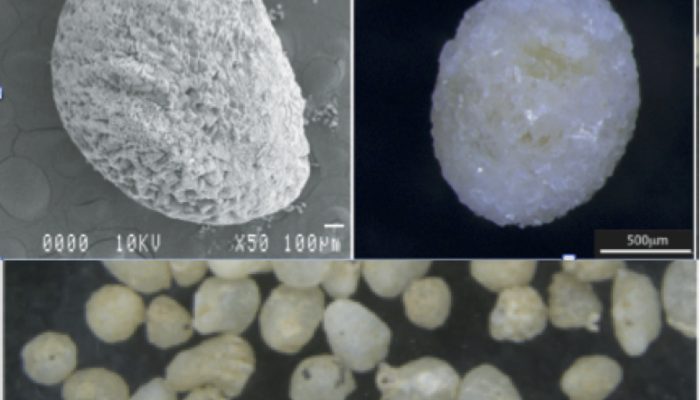
Name of proxy
Earthworm calcite granules (ECG)
Type of record
Paleotemperature and paleoprecipitation reconstruction; radiocarbon dating
Paleoenvironment
Continental environments – loess/paleosol sequences
Period of time investigated
Mostly Last full Glacial cycle – from 112,000-15,000 years Before Present (BP) (or older depending on the preservation of the granules).
How does it work?
Earthworms are commonly found living in soil and feeding on organic matter at the soil surface. In carbonate soil, some of them secrete small granules (0.1 to 2 mm) within 20 cm of the soil surface (Fig. 1). These granules, composed of crystalline calcite, are formed in the calciferous glands of the common earthworm species Lumbricus (Fig. 1).
Figure 1. Formation and structure of earthworm calcite granules: A) Schema of the calciferous glands of Lumbricus terrestris (Canti, 1998; Darwin, 1881), B) Scanning Electron Microscopy of a fossil granule, modified from CoDEM/BATLAB C) Distribution of granules through present day experimental soil (Canti and Piearce, 2003), D) Thin section of a fossil granule (photo P. Antoine).
Fossil earthworm calcite granules (ECG) are common in various carbonate-rich Quaternary deposits and have been identified in loess-paleosol sequences in western Europe. Aeolian loess (i.e. accumulation of silt size sediment formed by the deposition of wind-blown dust) preserves evidence for climatic fluctuations in the past: generally, primary loess representing periglacial conditions coeval with expanded ice sheets alternates with tundra permafrost horizons and arctic soils representing milder climates.
Over the last glacial cycle (between 112-15 ky BP), the climate of the Earth varied on millennial timescales between cold (stadial) and temperate (interstadial) periods. This climate variability is reflected in the character of the loess sediment. These short-term climatic changes had a strong influence on landscapes, ecosystems, including human beings. However, loess sediment analysis only give us information on the relative changes of climates. We lack quantitative temperature and precipitation data to precisely reconstruct past conditions.
The granules of earthworms living in past loess environments provide a quantitative tool. The granule concentrations correlate with the nature of the loess sediment; paleosols preserve the highest concentrations while primary loess the lowest. These observations highlight a rapid response of the earthworm population to climatic variations suggesting milder climatic conditions during the formation of paleosol. ECG can be considered as a new paleoenvironmental proxy, capable of detecting rapid climatic events within the Last Glacial loess sequence. Furthermore, the chemistry of these ancient earthworms’ diets can be calibrated to the temperature and precipitation of the climate prevailing at the time.
What are the key findings that have been done using this proxy?
We developed a new method to calculate past temperatures and precipitations based on oxygen and carbon stable isotope compositions of earthworm granules from loess at the Nussloch site in the Rhine Valley, Germany. Our results provide the first quantitative past climate data from loess sediments.
Figure 2: First quantification of paleoclimate data in a loess sequence: Comparison between radiocarbon dating (Moine et al., 2017), granule concentration (Prud’homme et al., 2018b) and quantitative paleoclimate parameters (Tair and MAP, Prud’homme et al., 2016, 2018a) of the Nussloch loess sequence (Antoine et al., 2009) with the δ18O of Greenland ice core (NGRIP, Rasmussen et al., 2014).
Figure 2 shows the results stable isotope geochemistry of earthworm granules from selected strata within the loess sequence at Nussloch. Temperatures for the warmest months were estimated between 10 to 12°C and the mean annual precipitation was estimated between 250 and 400 mm during the formation of palaeosols. Our results suggest that the climate at Nussloch during the temperate periods (interstadials) were most likely subarctic with cool summers and very cold winters.
Earthworm granules can also be directly dated by radiocarbon methods (Moine et al., 2017). Since the nature of loess sediments reflects climatic variations over short (millennial) timescales, the lack of precise chronologies in loess can be a problem when trying to correlate with global climatic events. Our new approach, combining precise radiocarbon dating with quantitative climate reconstruction, represents a major advance for understanding climate in terrestrial regions.
Moreover, the radiocarbon chronology facilitates precise correlation between terrestrial sequences and ice core records. This is fundamental for understanding teleconnections between mid- and high-latitude climate changes, as well as the spatial and temporal impact on prehistoric populations in Europe.
This post has been reviewed by the editor.
References Antoine, P., Rousseau, D.D., Moine, O., Kunesch, S., Hatté, C., Lang, A., Tissoux, H. & Zöller, L. (2009) Rapid and cyclic aeolian deposition during the Last Glacial in European loess: a high-resolution record from Nussloch, Germany. Quaternary Science Reviews 28, 2955–2973. Canti, M.G. (1998) Origin of calcium carbonate granules found in buried soils and Quaternary deposits. Boreas 27, 275–288. Canti, M.G. & Piearce, T.G. (2003) Morphology and dynamics of calcium carbonate granules produced by different earthworm species. Pedobiologia 47, 511–521. Darwin, C. (1881) The Formation of Vegetable Mould through the action of Worms, with Observations on their Habits. Murray, London. Moine, O., Antoine, P., Hatté, C., Landais, A., Mathieu, J., Prud’homme, C. & Rousseau, D.D. (2017) The impact of Last Glacial climate variability in west-European loess revealed by radiocarbon dating of fossil earthworm granules. Proceedings of the National Academy of Sciences of the United States of America, 1–6. Prud’homme, C., Lécuyer, C., Antoine, P., Moine, O., Hatté, C., Fourel, F., Martineau, F. & Rousseau, D.D. (2016) Palaeotemperature reconstruction during the Last Glacial from δ18O of earthworm calcite granules from Nussloch loess sequence, Germany. Earth and Planetary Science Letters 442, 13–20. Prud’homme, C., Lécuyer, C., Antoine, P., Moine, O., Hatté, C., Fourel, F., Amiot, R., Martineau, F. & Rousseau, D.D. (2018) δ13C signal of earthworm calcite granules: a new proxy for palaeoprecipitation reconstructions during the Last Glacial in Western Europe. Quaternary Science Reviews 179, 158–166. Prud’homme, C., Moine, O., Mathieu, J., Saulnier-Copard, S. & Antoine, P. High-resolution quantification of earthworm calcite granules from western European loess sequences reveals stadial–interstadial climatic variability during the Last Glacial. Boreas. Accepted 1st October 2018 Rasmussen, S.O., Bigler, M., Blockley, S.P., Blunier, T., Buchardt, S.L., Clausen, H.B., Cvijanovic, I., Dahl-Jensen, D., Johnsen, S.J., Fischer, H., Gkinis, V., Guillevic, M., Hoek, W.Z., Lowe, J.J., Pedro, J.B., et al. (2014) A stratigraphic framework for abrupt climatic changes during the Last Glacial period based on three synchronized Greenland ice-core records: Refining and extending the INTIMATE event stratigraphy. Quaternary Science Reviews 106, 14–28.



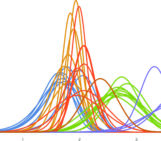
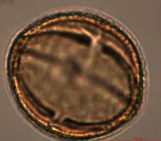
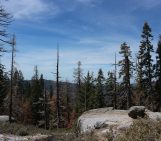
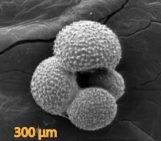
Emma Versteegh
The actual paleotemperature equation that was applied in this research was developed by Versteegh et al. (2013) https://doi.org/10.1016/j.gca.2013.06.020